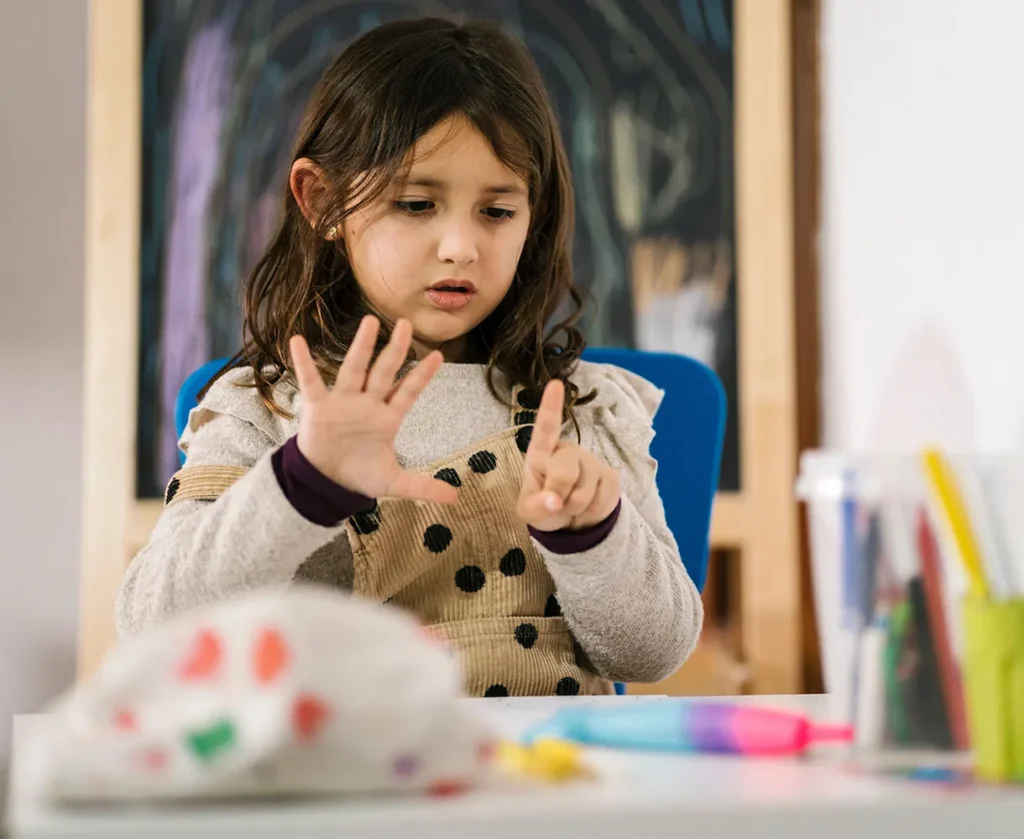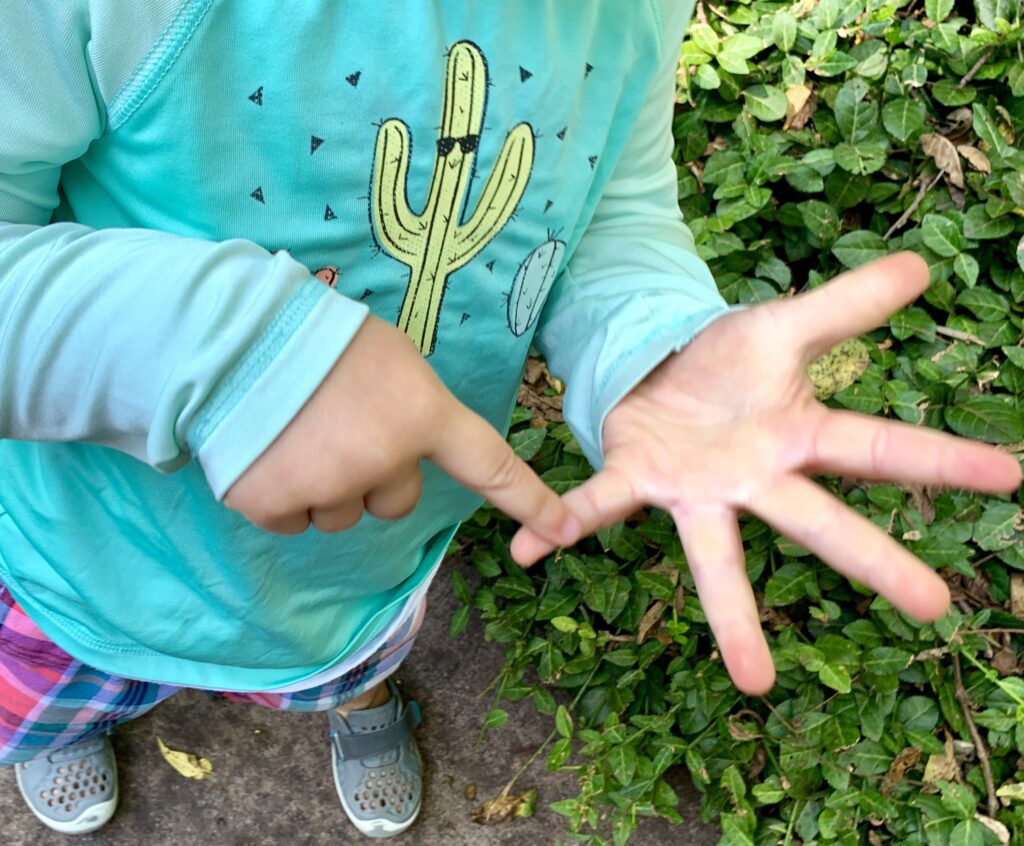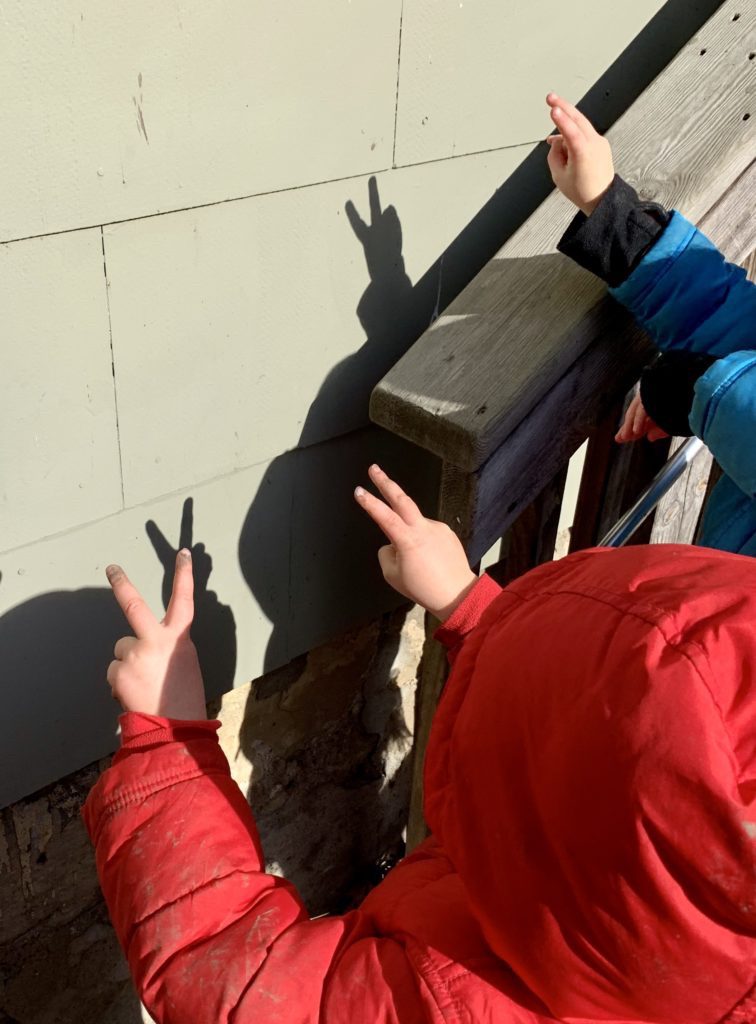Why Fingers Are Your Child’s Best Math Tool

Did you know that fingers are one of the best tools for early math learning?
From helping kids recognize number patterns to building a strong foundation for understanding key numbers such as 5 and 10, finger counting is a fun and easy way for little ones to visualize numbers.
One of the best things about this math tool is that it's always available! Whether you're in the car, waiting at the doctor’s office, or having dinner, your child can practice math anywhere.
“Fingers, fingers, 1-2-3 . . . how many fingers do you see?”
One of our favorite finger games starts with me hiding one hand behind my back. When I bring it forward, I hold up some fingers and the children shout out the number of fingers that they see.
“Three!” shout the friends playing the game.
This is one of the first math skills that children learn. It's called subitizing—the ability to recognize how many objects are in a small set without actually counting them.
While using their fingers, young children can feel and see the difference between the numbers 2 and 4. This developmentally appropriate math game helps children connect a quantity to its numeric name—and their vocabulary grows as they chant along with the rhyme.
When children hold up three fingers and understand that they represent the number “3,” they are starting to recognize the quantity without counting each finger individually. This simple play builds a strong foundation for number sense, which will help your child understand more complex math concepts later on.

Using fingers to count isn’t just about memorizing number words. It’s about deepening a child’s understanding of key math concepts such as:
- Counting Sequence: Understanding the order of numbers, starting with one.
- One-to-One Correspondence: Giving each object exactly one number from the counting sequence.
- Cardinality: The last number counted tells you how many things are in the group.
Because our number system is based on groups of 10, fingers are the perfect tool for making this idea concrete. With five fingers on each hand, children start to see how numbers group together to make 10. Numbers like 5 and 10 are “benchmark” numbers because being able to break them apart and combine them in different ways helps children strengthen their mental math skills.
For example, when children see that 10 can be split into 9 + 1, 8 + 2, 7 + 3, and so on (called number bonds to 10), they’re laying the groundwork for addition and subtraction skills as they grow.
By counting on their fingers, children aren’t just learning to count—they’re also starting to understand how numbers relate to each other.

Recent studies show how hands literally help the brain think. Children clearly "think"' with their hands while learning to count. Early learners who use their fingers as math tools tend to perform better in math later on.
So, the next time you see children counting on their fingers, remember that it's not just a simple habit—it’s a powerful way to help them visualize numbers and build strong math skills. Fingers are a fantastic tool for developing number sense and understanding our base-10 system.
By turning finger counting into a fun, hands-on activity, you’ll help your child develop a positive relationship with numbers that will help lay the foundation for math success in the years to come.
Looking for some fun finger play activities? Check out our Ready Child activity, This Little Piggy!